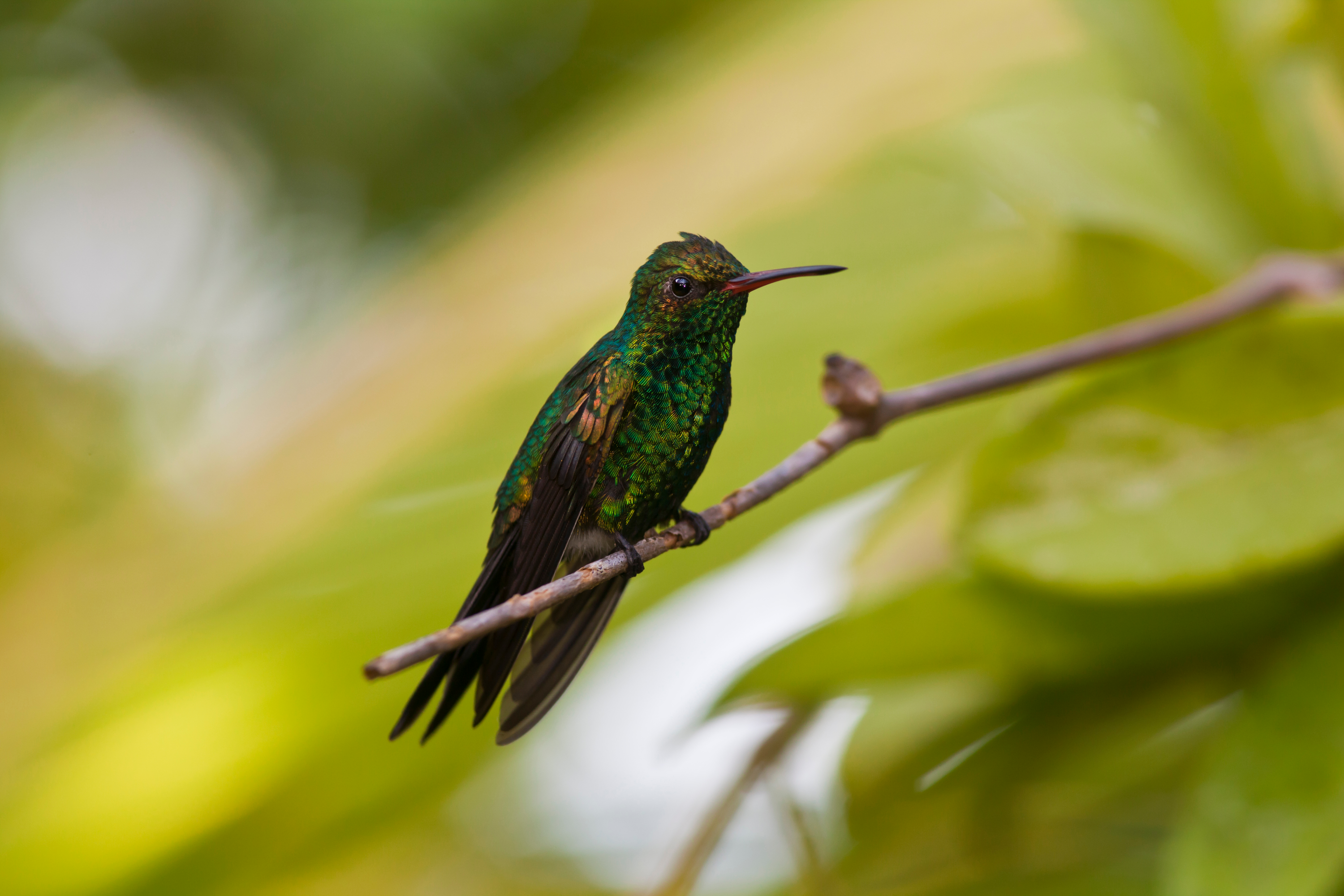Green-breasted mango
(Anthracothorax prevostii)

Description
The green-breasted mango (Anthracothorax prevostii) is a hummingbird from tropical America. The scientific name of this bird commemorates the French naturalist Florent Prévost. Adults of this medium-sized hummingbird species are 11–12 cm in length. Males average 7.2 g, females, 6.8 g. The longish black bill is slightly decurved. The tail in both sexes has dark central feathers. In adult males, the outer tail feathers are deep magenta to wine purple tipped with black. In females and juvenile males, the outer tail feathers are broadly banded in magenta and iridescent dark blue, with narrow white tips on the outer 3–4 feathers. The adult male has glossy bright green upperparts. His throat and chest have a relatively narrow matte black central area, bordered with blue-green. The flanks are bright green, and the black of the chest tapers onto the belly. Females and immature males have bronze-green upperparts and largely white underparts with a dark central stripe that changes from black at the chin to blue-green on the throat. Immature birds of both sexes usually show some gray or buff feather edges on the head and wings and are mottled with cinnamon to rusty brown along the edges of the white breast-belly stripe. Immature females have less extensive magenta in the outer tail feathers than adult females or immature males. The call of the green-breasted mango is a high-pitched tsup, and the song is a buzzing kazick-kazee-kazick-kazee-kazick-kazee-kazick-kazee. This species is very similar to the closely related black-throated mango. Although the male green-breasted mango has less extensive black on the underparts, this and other plumage differences are not always easy to confirm in the field because the birds appear all-black. The females of the two species can be almost inseparable, although green-breasted has more extensively coppery upperpart tones than its relative. This species breeds from eastern and southern Mexico south through Central America, including some near-shore islands, to Costa Rica. In western and central Panama, it is replaced by the possibly conspecific Veraguan mango Anthracothorax veraguensis. Disjunct populations occur along the northern coast of South America from extreme northeastern Colombia through northernmost Venezuela, in the upper Cauca River Valley of southwestern Colombia, and on the coastal slope of southwestern Ecuador and extreme northwestern Peru.
Taxonomic tree:







